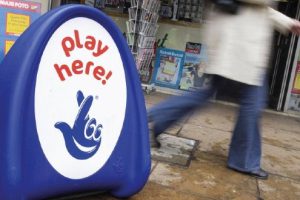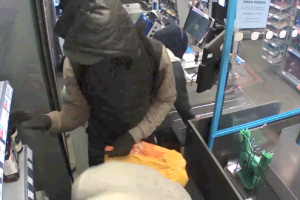That sharp expansion is notable not just because a crisis has led stores to develop delivery services far more quickly than they otherwise might have done, but also because the briefest analysis shows delivery services are still not as common as the degree of coverage they receive might suggest. In short, deliveries have indeed increased sharply, but the bigger question for 2021 and beyond is how far they will continue to do so.
Telephone orders
Figures from the Association of Convenience Stores (ACS) suggest that back in 2019, 12% of retailers offered delivery in some form and that by the end of 2020 this had gone up to 17%. At the peak of the pandemic, says ACS chief executive James Lowman, “around 600,000 deliveries a week were going out of convenience stores”.
Behind this figure are a lot of different ways of carrying out deliveries. For some, delivery during Covid meant taking orders over the phone from the elderly or vulnerable and sending a member of staff with a couple of carrier bags to their home. For others, it involved using local volunteers to take telephone orders round to those who were self-isolating.
This was the route taken by Amish Shingadia at Londis Caterways & Post Office in Horsham, West Sussex, where staff worked with volunteers in a collaborative effort to set up a delivery service for those self-isolating that was free and with no minimum spend. During the pandemic, many retailers provided free delivery, but before long the question of whether this was sustainable became a real one. Modest charges for delivery now seem more usual.
Profit stream
For some, the pandemic was a prompt to set up a full online business that is likely to provide an additional profit stream and last long after Covid has ceased to wreak havoc. Some retailers (but again, not as many as you might think – see graph) chose to partner with existing services such as Deliveroo or Uber Eats, while others wanted to retain complete control over what they offered. One notable example in the “keep control” camp is David Charman, who runs Spar Parkfoot in West Malling, Kent. He felt that to do anything other than set up his own delivery service would mean he was not “truly independent”.
Others who were notably successful in setting up their own systems include Justin Whittaker at MJ’s Premier in Royton, Lancashire. His app-based home delivery service allows customers to order via their smartphone and have groceries delivered to their door within 30 minutes. He even bought two branded Smart cars to make the deliveries.
Settling down
Where does the variety of solutions to delivery leave the sector as lockdown ends? Lowman says: “The question now is how this will all settle down. Will stores continue to take orders over the phone and deliver themselves? Will they take orders themselves and hand over to a delivery firm? Or will they outsource the entire order and delivery to a third party?”
Lowman is guarded about which of these options might be better in different circumstances. He says that “the ACS has no view on this” but adds a personal observation that what is important is “transparency with the customer”. There is certainly an underlying question about whether the plethora of delivery companies now entering the market are an opportunity or a threat to independent retail; possibly they are a mixture of both. Not many observers think there is any doubt online sales will be a bigger part of the business from now on, but it is “a question of how much bigger”, says Lowman.
And that question is a crucial one. For despite the understandable excitement – and sometimes fear – surrounding the expansion of deliveries, their relative insignificance in sales means they are unlikely to be either a disaster or a business-changer, at least in the short term. While 10-minute delivery times are headline-grabbing, most analysis seems to indicate that in-store sales will heavily outweigh deliveries for a long time to come.
That said, there is no doubt deliveries are becoming more important and are giving an edge to those stores that adopt them. Lumina Intelligence, the food and drink sector research company, released a report last month on the rapid expansion of delivery during the last year. It found that although only 8% of stores offered delivery, it accounted for 7% of sales in those that did, which suggests retailers not already offering delivery should consider doing so.
These figures can be hard to interpret with confidence, but for convenience store consultant and analyst Scott Annan, the bottom line is that 90% of retailers’ business is still in-store.
He says: “Delivery is here to stay, but retailers need to put it in perspective. Home delivery is about 10% of the market nationally, perhaps a bit bigger in London, but 90% is still in stores.” Annan points out that even for stores that have embraced delivery in the last year, a figure of 5% of total sales is more than respectable.
If you are thinking of putting that percentage out to a third party, the question then becomes what you stand to lose as well as what you stand to gain.
Dark stores
Annan warns that in the United States, stores that have partnered with some delivery services have found they have effectively given their new ‘partners’ access to customer lists, their most commonly sold products and the areas where delivery is in most demand.
Given all this information, it is not too hard to see why delivery specialists are then tempted to set up dark stores with the right products in the right places. They then cease to become a partner of convenience and become a competitor. Ultimately, that is where the danger might lie.
By David Harris
 Talking Retail Grocery and product news for independent retailers
Talking Retail Grocery and product news for independent retailers






